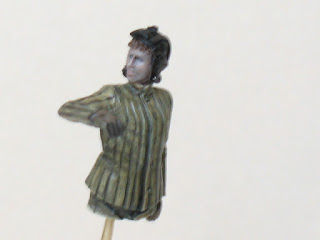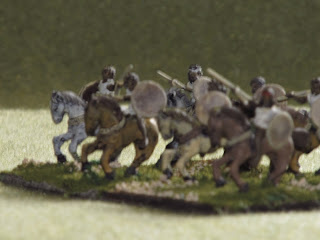This time with the rematch he showed up with an even more mobile army comprising of chariots light horse and light foot. I won the initiative and opted for a developed battlefield. Placing down some enclosed fields and a village to break up the open ground which might favour battle groups of chariots to come hammering across causing mayhem.
 |
| The placement of terrain |
In the set up both Alan and I placed
ambush markers on the gentle hill to my left. His was a fake but mine was real.
Once his light foot advanced they discovered an average legion waiting to
get shot at. I needed to get the hill so he could not deploy his chariots on it
providing them with a clear run down to my legions. The obvious flaw in
this was they where isolated. What was worse Alan’s light archers managed to
disrupt my legion forcing them to charge and isolate themselves even further.
Naturally, he evaded long and I charged normal so I failed to hit him in the
back with my legion, resulting in even more isolated the legion on right flank. This quickly degenerated into a
foot race to support the legion before they got mullered. This I nearly
achieved, nevertheless, the legion was soon dispatched in smart order by Alan's
chariots.
 |
| Attempting to get support to the isolated legion |
 |
| In the background; my cavalry preparing to charge Alan's light horse |
This leaves me with a third loss out of
three games in recent months. In fact, I suspect my legionnaires might ask me to put them on ebay!!
Photo credits Alan













































